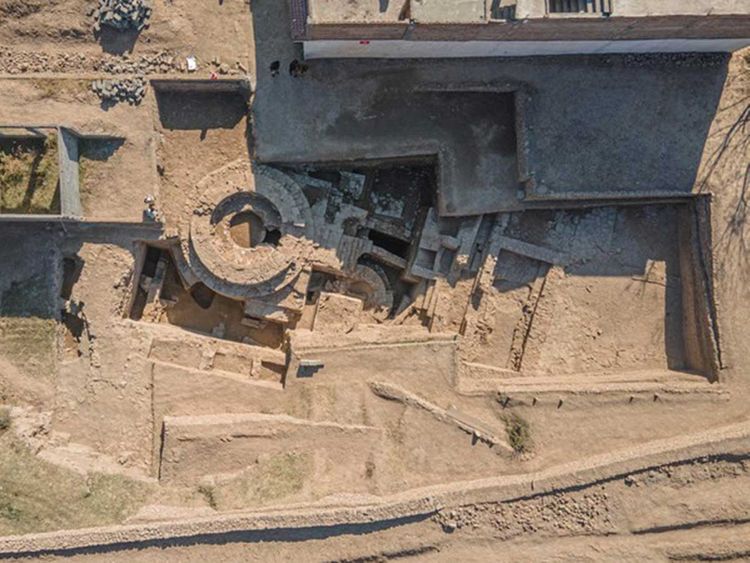
Archaeologists in Pakistan’s Swat Valley unearthed a 2,000-year-old Buddhist temple in December 2021.Image Credit: Missione Archeologica Italiana in Pakistan ISMEO Ca’ Foscari University of Venice
Ancient Buddhist structure found in Barikot is roughly 2,200 years old
ISLAMABAD: One of the world’s oldest Buddhist temples discovered last year in Pakistan has been featured in the ‘Top 10 Discoveries of 2022’ by the renowned Archaeology Magazine.
The temple was uncovered in the town of Barikot in the Swat region of Pakistan’s northwestern Khyber Pakhtunkhwa (KP) province. The rich cultural heritage of Swat attracts many foreign tourists and heritage lovers.
Archaeologist professor Luca Maria Olivieri of Ca’ Foscari University of Venice led the excavation which was conducted in collaboration with the International Association for Mediterranean and Oriental Studies (ISMEO) and the Directorate of Archaeology and Museums KP Province (DOAM KP) and the Swat Museum.
The structure dates back to the second half of the 2nd century BC or some 2,200 years ago. The site could be even older but only Carbon-14 dating analyses can confirm, according to the official statement. “This discovery sheds new light onto the forms of ancient Buddhism and its spread in old Gandhara, adding a piece to the puzzle of what we know about the ancient city” of Barikot.
The other nine top discoveries of 2022 are from Jordan, Egypt, Iraq, Mexico, Austria, Russia, Guatemala, Peru and Antarctica.
Top discovery of 2022
In its Top 10 Discoveries of 2022 feature, Archaeology Magazine featured the old temple, saying that the monument dated back to at least as early as the end of the second century BC. “This makes it the oldest known Buddhist temple in the region and places its construction firmly during the period when Barikot is known to have been a centre of Buddhist teaching and a sacred pilgrimage site.”
This region in northwestern Pakistan, known as Greater Gandhara, was “a crossroads for the exchange of goods and culture among the civilisations of the Middle East, Central Asia and India” from the sixth century BC.
Fascinating finds
During the 2021 excavation, the archaeologists unveiled a fascinating Buddhist monument. The temple’s ruins stand around ten feet tall and consisted of a ceremonial platform that once housed a stupa or dome often found in Buddhist architecture. The structure included a smaller stupa at the front, a room or cell for monks, a podium or pillar, a staircase, vestibule rooms, and a public courtyard that overlooked a road.
“The discovery of a great religious monument created at the time of the Indo-Greek kingdom testifies that this was an important and ancient centre for cult and pilgrimage,” says Olivieri in the statement. “At that time, Swat already was a sacred land for Buddhism.”
In addition to the temple, the team unearthed pottery, coins, jewellery, statues, seals, terracotta objects, seals and other ancient artifacts. The temple was likely abandoned in the third century AD following an earthquake, according to experts.( Gulf News)

